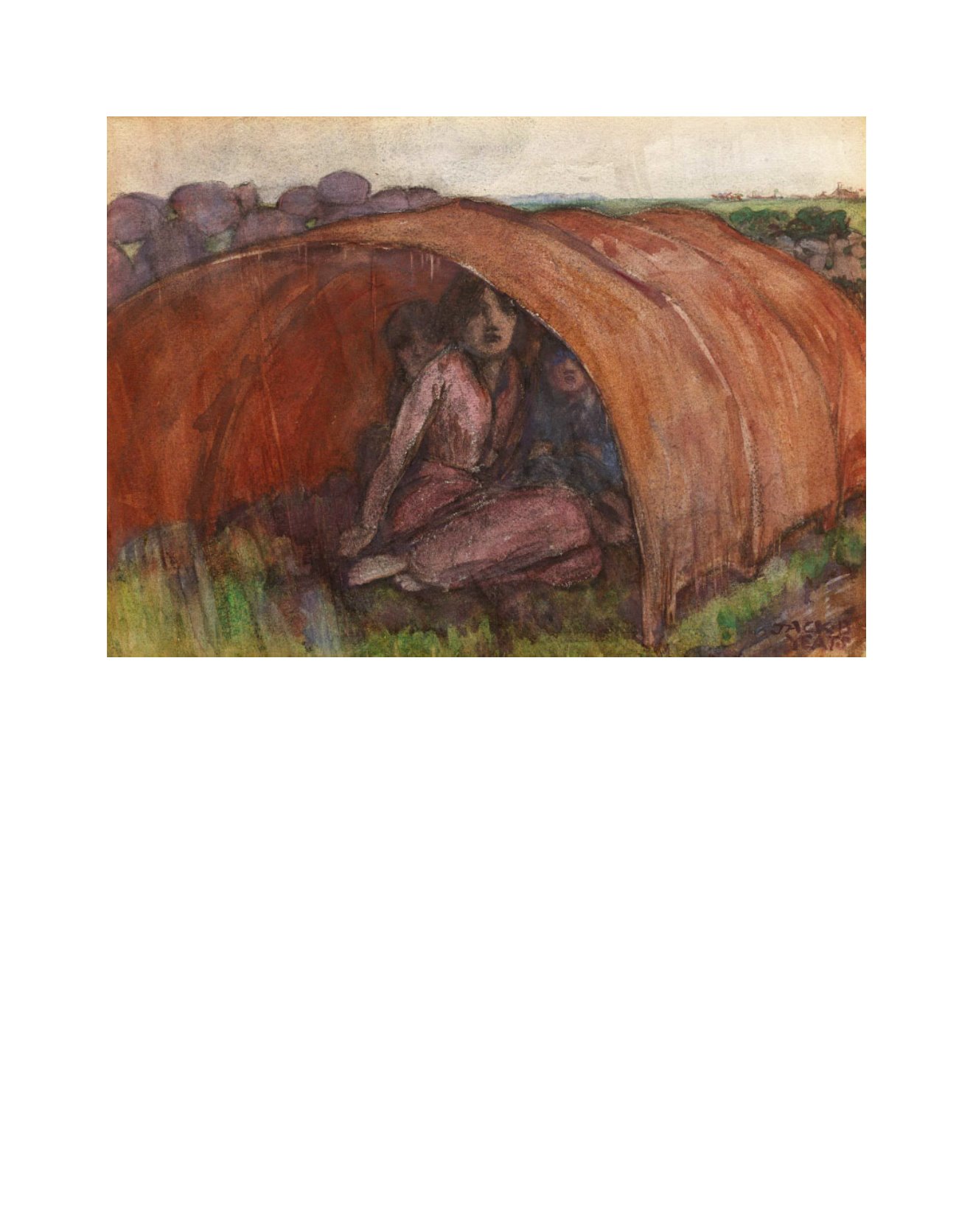

WHYTES
SINCE 1783
,
17
18
Jack Butler Yeats RHA (1871-1957)
THE BALLAD SINGER’S CHILDREN
watercolour on artist board
signed lower right
10 by 14in. (25.40 by 35.56cm)
Exhibited:
Sketches of Life in the West of Ireland,Wells Central Hall, 1902,
catalogue no. 17;
Sketches of Life in the West of Ireland,Walker Art Gallery, 1903
Literature:
Pyle, Hilary, Jack B. Yeats: His watercolours Drawings and Pastels,
Irish Academic Press, Dublin, 1993, no. 403, p. 114
Yeats was an enormous admirer of the ballad singer.This nomadic
figure survived by singing new and old popular songs and selling
cheaply produced copies of them in towns and villages all over the
country.Yeats assembled a large collection of these ballad sheets and
even wrote his own versions under the pseudonymWolfe Tone
MacGowan. In the 19th century ballad singers were powerful figures
whose songs could cause unrest and spread seditious ideas because
they linked a world of literacy with one in which oral traditions
continued to be paramount. By the time Yeats was painting, the
authority of the ballad singer was rapidly declining.
In this early watercolour three figures, the children of a ballad singer, sit
in the shelter of a tent-like structure, of the type that was widely used
by the poor in the 19th century. It is pitched on a narrow piece of grass
between a roadway and a stone wall.The children stare out at the
viewer in a wary manner that suggests their vulnerability. In the
distance behind them a more elaborate series of structures is just
visible.These indicate that a travelling fair is taking place. Such events
offered the ballad singers an invaluable opportunity to ply their wares.
John Purser has written that ‘Yeats invests [the ballad singer] with wild
nobility’.This painting accords with this observation. It presents the
figure’s impoverished but self-possessed family in a sympathetic and
dignified manner.The carefully constructed composition and the
concentrated use of colour - the faded orange of the tent and the
intense purple of the wall - aestheticise the subject, producing a highly
wrought image.The work was exhibited in Dublin in 1902 and was
bought by the Irish American lawyer, John Quinn, the following year.
Quinn was an astute collector of modernist art. In 1904 he arranged for
Yeats to visit New York and hold a one-man exhibition in the city. He
continued to be an important patron of Jack Yeats’ work recognising its
unique contribution to modern art.
1
Jenny McCarthy, ‘Jack B.Yeats’s A Broadsheet’. Images of Orality’, in N. Cronin, S.
Crosson and J. Eastlake (eds), Anáil an Bhéil Bheo: Orality and Modern Irish
Culture (Cambridge Scholars Publishing, 2009), pp.87-97.
2
Quoted in McCarthy, p.89.
Dr. Róisín Kennedy
Dublin October 2014
Dr. Róisín Kennedy is a graduate of UCD and the University of
Edinburgh.
She curated and catalogued the historic and contemporary State art
collection at Dublin Castle, and wrote Dublin Castle Art, (1999). She is
former Yeats Curator at the National Gallery of Ireland, (2006-08), where
she curated The Fantastic in Irish Art and Masquerade and Spectacle:
The Travelling Fair in the Work of Jack B.Yeats in 2007.
€
10,000-
€
15,000 (£8,000-£12,000 approx)



















